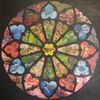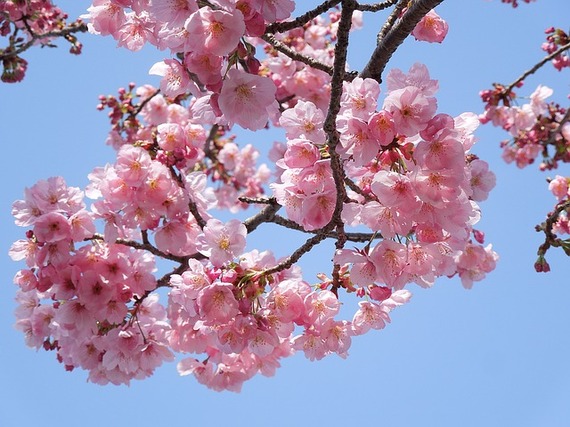Photo credit: Pixabay
Lately I've read some authors who have led me to contemplate the mental images we keep fixed in our minds, images that guide our lives. It's amazing how such ephemeral things exert such huge influences on us and on our world. Although the first author, Richard Rohr, is a well-known retreat leader, and McDonough and Braungart leading proponents of ecological design, in many ways they speak the same language.
In The Upcycle McDonough and Braungart argue that they way we think about the environment impedes true progress, and that the way we think is driven by certain images we have about humans and nature. The first image resembles a romantic landscape painting, where a lovely benign nature nurtures us and enfolds us in its embrace. The authors point out that nature does nurture us, of course, but also kills and sicken us. Nature can be one tough mother. We, however, tend to romanticize her.
Because we romanticize Mother Nature we pity her when we realize all the damage we've inflicted. Out of guilt we long for supposedly idyllic times long past when humans lived in peace with nature. She is good and we are bad, unwanted children, intruders in Eden.
Because we see ourselves stepping on nature, trampling her beneath the weight of our lifestyles, we yearn to minimize our ecological footprint. We attempt to downsize from size 11 to size 8. As a result we seek to minimize our emissions of pollutants and use of fossil fuels by carpooling and using energy efficient light bulbs. While minimizing our footprint is a good "first step," we confuse being less bad with doing good. One does not have to be an ethicist to question someone who claims they are good because they have poisoned fewer people this year than last. In lieu of congratulating him on his progress, we might encourage him to consider poisoning no one at all or, even better, going beyond that to helping others in need.
The authors similarly encourage us to consider prodigal generosity instead of downsizing our feet by quoting Ralph Waldo Emerson:
Do not waste yourself in rejection, nor bark against the bad,but chant the beauty of the good.
In their previous book, Cradle to Cradle, the authors explore nature's prodigality. Consider the cherry tree. Instead of producing only one cherry that it then will use to reproduce itself, cherry trees produce thousands of fruit over their lifetimes, thereby providing sustenance for multitudes of organisms. By producing prodigally nature creates webs of interdependent relationships and flourishing ecosystems of astounding diversity. This generosity leads to abundance while one-fruit stinginess leads to isolation. Rather than minimize our ecological footprint McDonough and Braungart urge us instead act like fruit trees that emit lots of positive "emissions" that benefit all those around us. They call this "upcycling." Cradle to Cradle describes this approach to design while The Upcycle updates the authors' thinking and relates many examples of real world upcycling.
In a daily meditation drawn from his forthcoming book, The Divine Dance: The Trinity and Your Transformation, Richard Rohr suggests that our image of God often impedes our spiritual growth and ultimately negatively impacts our behavior towards others. Rohr points out that many people see God as some distant, threatening enforcer who judges our every move. This God stands apart from us and rarely gets involved in human affairs. Attempting to emulate God we try to leave the world behind, concentrating instead on "things above" as opposed to things on earth. We stand apart from the rest of creation, calling it "nature"; i.e., everything not human. When heaven's above and nature's a distraction, stepping on it isn't necessarily such a bad thing.
Rohr, however, asks us to consider a far more Christian image of God: an intimate, dancing community of three persons perfectly, and intimately, relating to one another. This image of the Trinity stands in stark contrast to that of a distant judge. It's an image of a Mad Lover who wants nothing more than a totally intimate involvement with all it creates, whether you, me, or a fish. This Three-in-One rejoices in life and creates with joyful abandon, giving us rhinoceroses, platypuses, and river valleys. Each member of the Trinity gives itself totally to the others and responds in like manner. The Trinity does the same with creation, delighting in all it has made and permeating it with its presence.
Rohr's Trinitiarian image impels us to a whole-hearted immersion in creation, to a joyful, generous engagement with it. McDonough and Braungart similarly encourage us to celebrate life by engaging in cherry tree prodigality. The Trinity and the cherry tree move us to celebrate the life and goodness of all we encounter, whether in talking with one another, moving from place to place, or growing food. If we lived that way, we truly would be proclaiming Good News. To do that we only need to see the world a bit differently.

